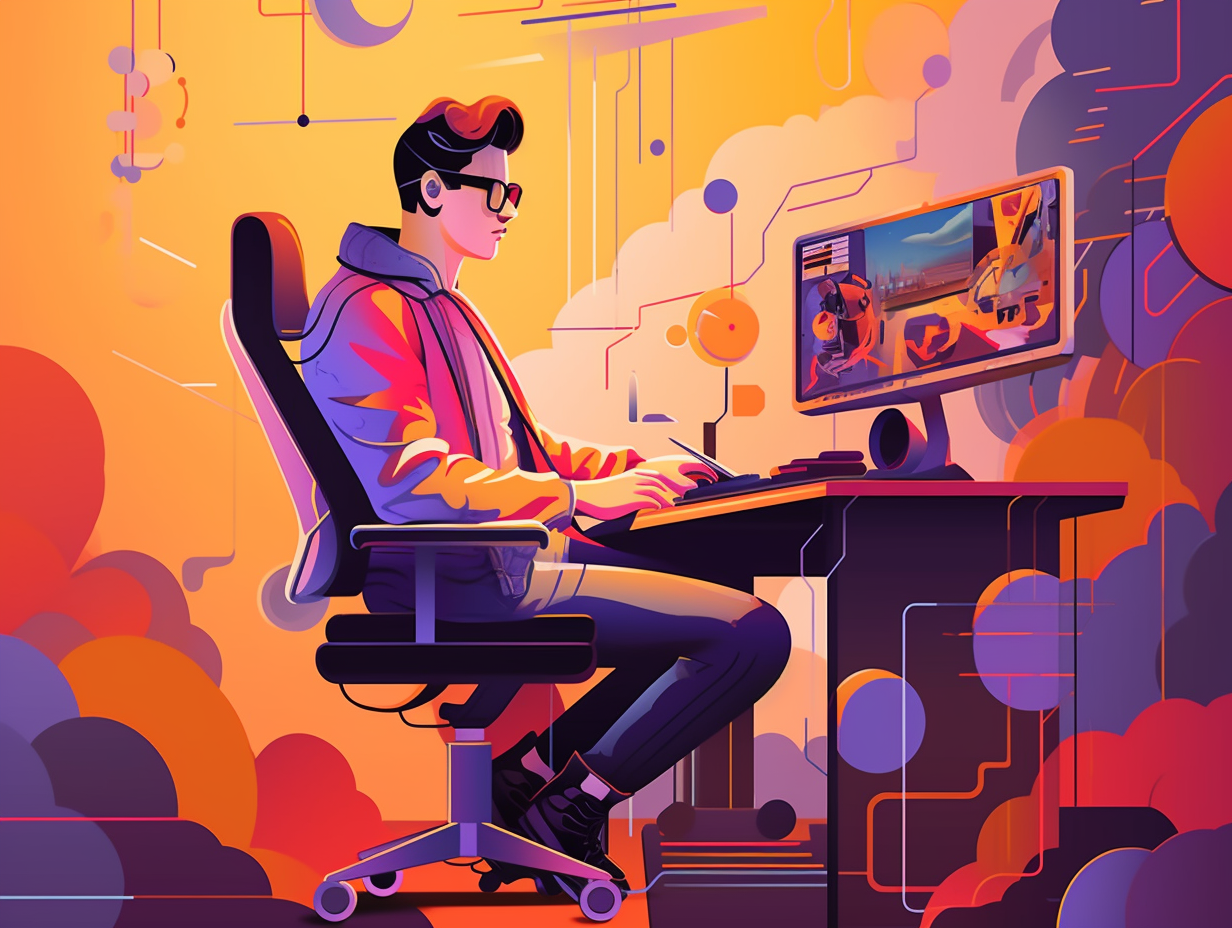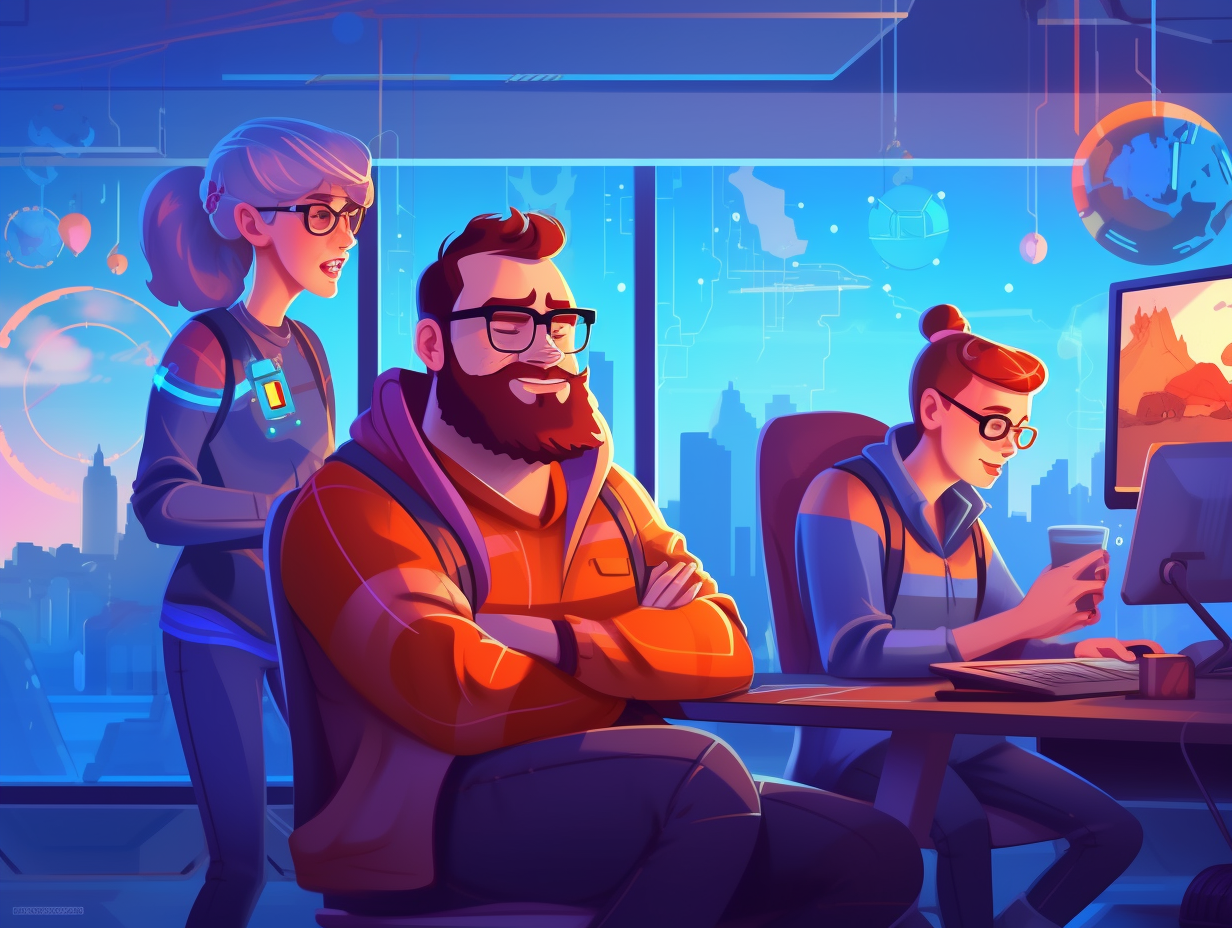Discover the World of Code: 14 Fascinating Fun Facts about Computer Engineering You Won't Believe!

1. King Midas of Ethernet
Bob Metcalfe must have felt like King Midas with an internet connection when he invented Ethernet – everything he touched turned into gigabytes: Little did he know, his creation would become the powerhouse of connectivity, handling data rates from 10 Mbps to 400 Gbps, and even 800 Gbps and 1.6 Tbps technologies on the horizon. Talk about a jackpot - Ethernet switches alone pulled in a whopping $30 billion in revenue in 2021, as per the International Data Corporation.
Source => amturing.acm.org
2. Fugaku, the Supercomputer Sake
When Fugaku is not busy being a Japanese plum wine, it's breaking world records in the computing scene: Known as the second fastest supercomputer in the world, Fugaku boasts a performance of 2.0 exaflops using a mixed-precision benchmark, making it the first supercomputer to exceed the exascale threshold for this benchmark, and costing around US$1 billion to develop.
Source => en.wikipedia.org

Did you know the touch screen technology we love on our smartphones dates back to the 1960s? Discover how E.A. Johnson and Dr. G Samuel Hurst made poking and swiping cool way before it was mainstream.
=> Fun Facts about Computers
3. Ada Lovelace's DoD Adventures
When Ada Lovelace isn't busy being the world's first computer programmer or inspiring the next generation of tech-savvy individuals, she moonlights as a linguist for the U.S. Department of Defense – well, at least her namesake programming language does: The language, aptly named "Ada," was developed in the early 1980s for the Department of Defense and honors Augusta Ada King, the 19th-century countess of Lovelace who worked alongside inventor Charles Babbage. Every year, her scientific prowess is celebrated on the second Tuesday of October with Ada Lovelace Day.
Source => britannica.com
4. Storage Cost Plunge Party
Remember when saving a song on your computer made you feel like a wealthy sultan running out of precious gold? Those days are long gone: from 2000 to 2020, the cost of storing one gigabyte of data has plunged from a princely $5,000 to a peasant-like $0.03, all thanks to improved storage capacities, mooching off cloud storage, and hard drive fairies working their digital magic.
Source => clubztutoring.com

5. Y2K Anxiety Flashback
Remember when we all partied like it was 1999, but our computers were having anxiety about it being 1900? Those Y2K worries sure kept us on our toes: The Y2K bug was caused by computer systems using two-digit codes for dates, leading to potential misinterpretation of 00 as 1900 instead of 2000. Thankfully, only minor incidents such as a nuclear facility hiccup in Japan and a U.S. missile detection mix-up with Russia occurred.
Source => nationalgeographic.org
6. Digital Debris Detectives
When life gives you lemons, sometimes you whip out your digital microscope and scrutinize those tangy fruits to extract every last byte of juicy secrets: Computer forensics is employed in every nook and cranny of our lives, from criminal investigations to corporate shenanigans, with experts diving deep into digital debris to recover precious information, ensuring that no byte is truly "gone with the wind".
Source => gadgetgenie.com
7. Couponing for Better Algorithms
What do computer scientists and obsessive couponers have in common? They both love cutting down on decision costs! But instead of fumbling through stacks of 2-for-1 deals, computer whizzes have upped their game with a nifty algorithm wizardry: Professor Dimitri Bertsekas developed an agent-by-agent policy improvement method, dramatically reducing computation costs while maintaining the quality of decisions in complex multiagent problems, potentially revolutionizing how computers solve hair-pulling sequential dilemmas.
Source => techxplore.com
8. Ant-Man's DNA Data Storage
Step aside, Marvel's Ant-Man: there's a new data superhero in town, and it's all in our genes. DNA, the building blocks of life, now moonlight as storage experts for our digital world: Scientists have achieved the ultimate storage density by encoding 1.6 bits of data per DNA nucleotide, marking a 60% improvement over previous methods and reaching 85% of the theoretical limit. Although not quite ready for mainstream deployment due to high synthesis and reading costs, DNA data storage could potentially archive every bit of data ever recorded.
Source => science.org
9. Quantum Teleportation Trek
Beam me up, Scotty! But wait, don't forget my quantum bits: In the realm of computer engineering, scientists have achieved quantum teleportation – a process where quantum information is transmitted from one location to another through entangled particles, without knowing the exact info being sent. Although it's not quite the Star Trek experience, this nifty innovation has set the record at a whopping 143 km (89 mi) in open air experiments in the Canary Islands!
Source => en.wikipedia.org

10. Spinning Drums of Memory
Before there was cloud storage, there were spinning drums of data: magnetic drum memory, invented by Gustav Tauschek in 1932, served as the main working memory of early computers in the 50s and 60s before being displaced by magnetic core memory and eventually replaced by hard disk drives. This seemingly ancient technology was so vital that programmers optimized code by timing its rotational latency, using techniques like the "skip factor" or "interleaving" in storage memory controllers.
Source => en.wikipedia.org
11. Game of Coding Thrones
In a world where the Iron Throne is made of rapidly evolving technology and coding languages instead of swords: job opportunities in computer engineering are soaring, with the Bureau of Labor Statistics projecting a whopping 15% growth in computer and information technology jobs by 2030. Better brace yourself and master languages such as Python, JavaScript, Java, SQL, and HTML/CSS – for the night is long and full of career opportunities!
Source => computerscience.org
12. Spacewar! Strikes Back
In a galaxy far, far away (or maybe just at MIT in the 1960s), a group of nerdy rebels battled each other in the cold vacuum of space, using boxy control contraptions to command their tiny phosphor spaceships: Meet the creators of "Spacewar!", the first digital video game developed in 1962 on a PDP-1 computer, featuring orbital mechanics and a stunning CRT vector display. This pioneering endeavor influenced the likes of Atari's founder and led to the inception of Computer Space, the first commercial video game and arcade game.
Source => analogue.co
13. Cloud Pillow for Small Businesses
If the cloud were a deliciously fluffy pillow, small businesses would be dreaming on a king-size bed: Cloud computing saves companies from the headache of upfront costs and the complexity of owning and maintaining IT infrastructure, leveling the playing field for businesses big and small by providing access to powerful computing resources anytime, anywhere.
Source => zdnet.com
14. Punch Cards' Wild Ride
Before yarn had an online presence and looms were more than just looming, punch cards stored data for the "it" machines of the 18th century: Behold the roller coaster history of punch cards – from sassy textile control to election booth superstar! : Originating in 1725 for loom control by Basile Bouchon, punch cards later gained fame with Charles Babbage's Analytical Engine in 1837 and Herman Hollerith's adaptation for the 1890 U.S. Census. Though now largely retired, our perforated friends still make guest appearances during standardized tests and voting.
Source => dataversity.net
Related Fun Facts




















